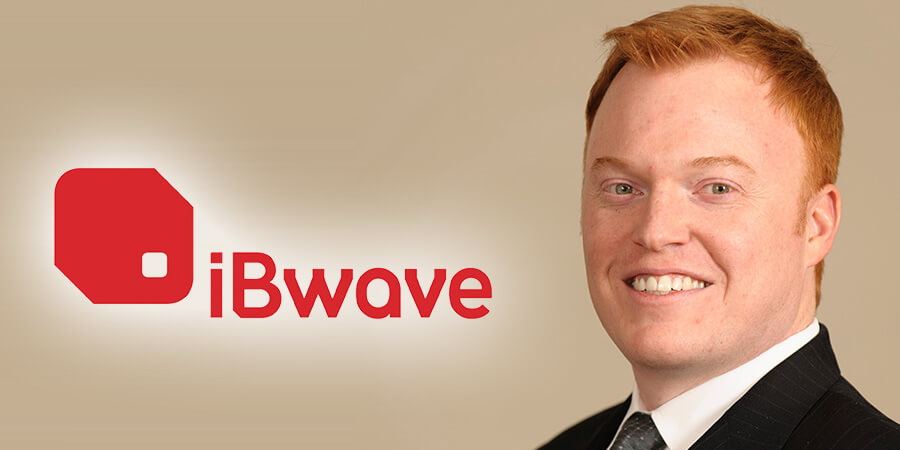iBwave has developed a stellar reputation in the telecommunications industry and is recognized for helping to connect millions of cellular and Wi-Fi users indoor, all over the world. From active/passive DAS, small cells, public safety to Wi-Fi, iBwave is dedicated to supporting its customers with their HetNet-ready solutions.
Its vision is to simplify in-building wireless design by enabling smarter planning, design and deployment of any wireless network project regardless of size, complexity or technology.
Ahead of 5G MENA in Dubai, Telecom Review managed to secure an exclusive interview with Seth Roy, VP Product Line Management at iBwave in an effort to find out more about some of the solutions the firm will introduce to the wireless sector in 2018 - and to find out Roy's predictions in relation to what impact 5G deployment will have on the wireless industry.
Can you tell us about some of the new products and solutions that iBwave is set to introduce to the market in 2018?
As the global industry reference, our software solutions allow for smarter planning, design and deployment of any in-building wireless project regardless of size, complexity or technology. We are excited to release version 10 of iBwave Design Enterprise, Mobile, and Unity into the market.
iBwave Design Enterprise will make the throughput of LTE-Advanced a reality with the added network densification enhancements which will allow for additional design scenarios, such as under the seat antennas. Additional features include frequency re-use, body loss modeling, and capacity planning just to name a few. All of this is intended to enable carriers to unlock potential new revenue streams for data services such as video calling. Of course, better network design means lower costs for overall troubleshooting and truck rolls.
We've made our Wi-Fi product (iBwave Wi-Fi®) even easier to use by enhancing annotations, picture documentation, and markups that you can perform while onsite. This improvement to the workflow allows us to add the ability to obtain project sign off on-site, which will eliminate multiple visits for approval. Best yet, because we have a converged software offering, our Mobile Planner users will also benefit from these improvements.
Lastly, iBwave Unity, our project management platform is more customizable than ever. You can now save both time and headaches by modifying the field structure to match your needs, create custom dashboards, and now you can even export or import data from Excel. Our objective was to encourage a non-disruptive workflow and easy field mapping, and I think we have achieved that goal.
What impact will the emergence and adoption of 5G have on the wireless network industry?
Moving from a 4G network into the 5G era will require many changes to infrastructure to support a wireline experience on a wireless device. From an in-building deployment perspective, massive MIMO and beamforming will increase the cost to deploy passive DAS and will favor active DAS deployments. Scalability and higher data throughput will require efficient networks favoring C-Ran architecture.
Operators will also benefit from 5G by deploying networks using ‘network slicing.' Meaning, while utilizing a single RF channel, the network scheduling management could support multiple use cases by creating sub-channels within the RF. For example, one subset may require low latency and low throughput, such as a vehicle to vehicle applications, while another subset of sub-channels users may require low latency and ultra-high throughput, such as video streaming.
For this example, the last subset of channels would not be sensitive to latency and requires low throughput, such as machine to machine applications. Let's look at network slicing at a bus stop. A bus would be running vehicle to vehicle collision avoiding system, video streaming for the passengers, and while occasionally sending vital vehicle data back to vehicle monitoring server at the bus office. All these applications have different capacity, throughput, and latency needs and 5G technology will offer the flexibility to address all these use cases.
iBwave has established a stellar reputation for delivering indoor wireless networks, but what is it that differentiates you from your competitors?
We love what we do, and it shows. Operating in 100 countries, with 1150 customers using our products, we can maintain a customer satisfaction rating of A+. We do this by delivering innovative products that help our customers build value for theirs. Our converged solutions allow the ability to design any wireless or Wi-Fi inbuilding network with unmatched tools for optimization and maintenance.
The latest release of iBwave Wi-Fi specifically targeted high-density Wi-Fi. Has the solution thus far been a success?
Absolutely, we've been adopted by OEMs like Riverbed & Ruckus Professional Services and other large service providers and system integrators who specialize in high-density venues. As a result, we've more than doubled our Wi-Fi business in the Enterprise market. We also got great feedback from the industry experts (mentioned in the website on http://www.ibwave.com/ibwave-wi-fi-suite) about the product's leadership when it comes to design complex environments.










